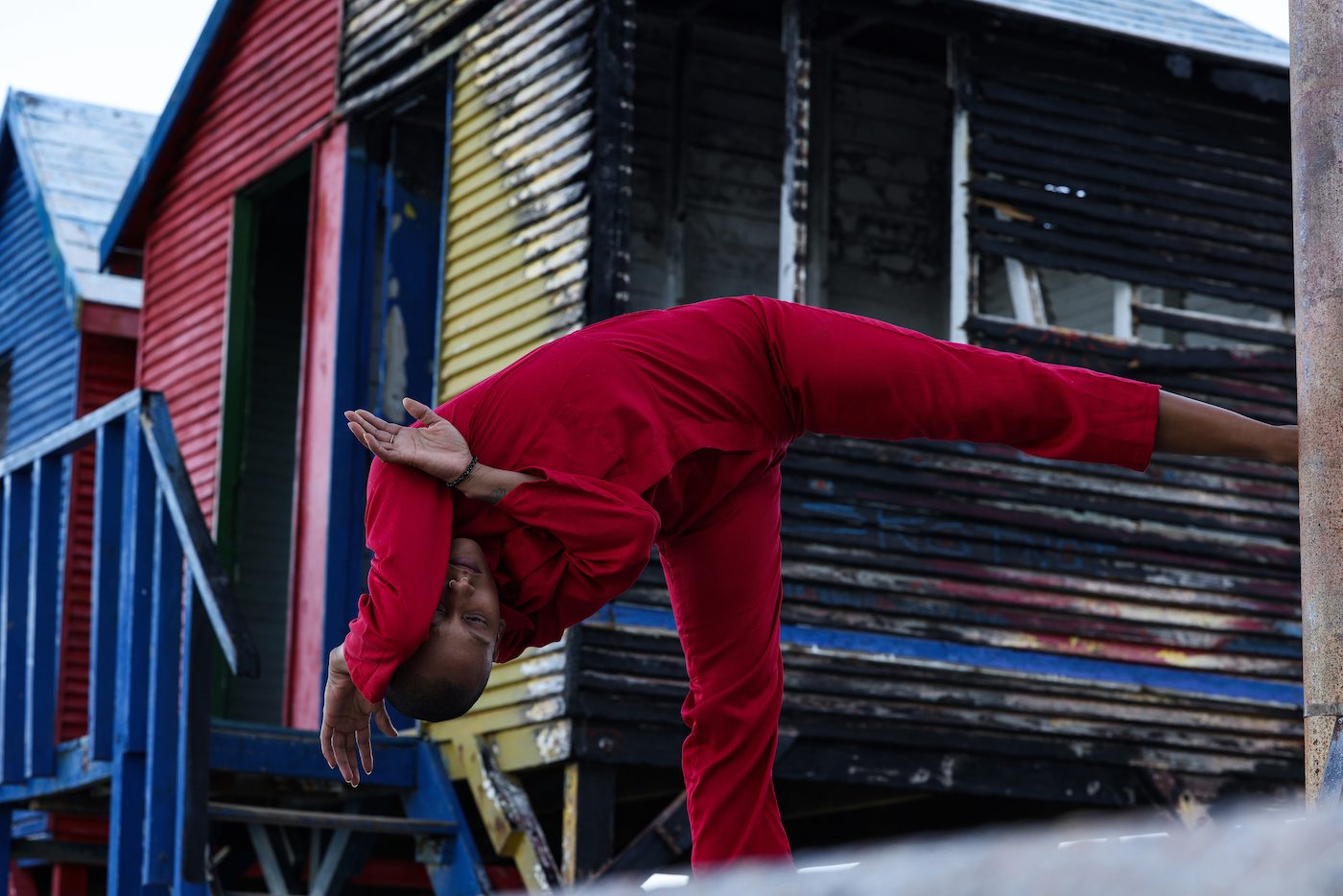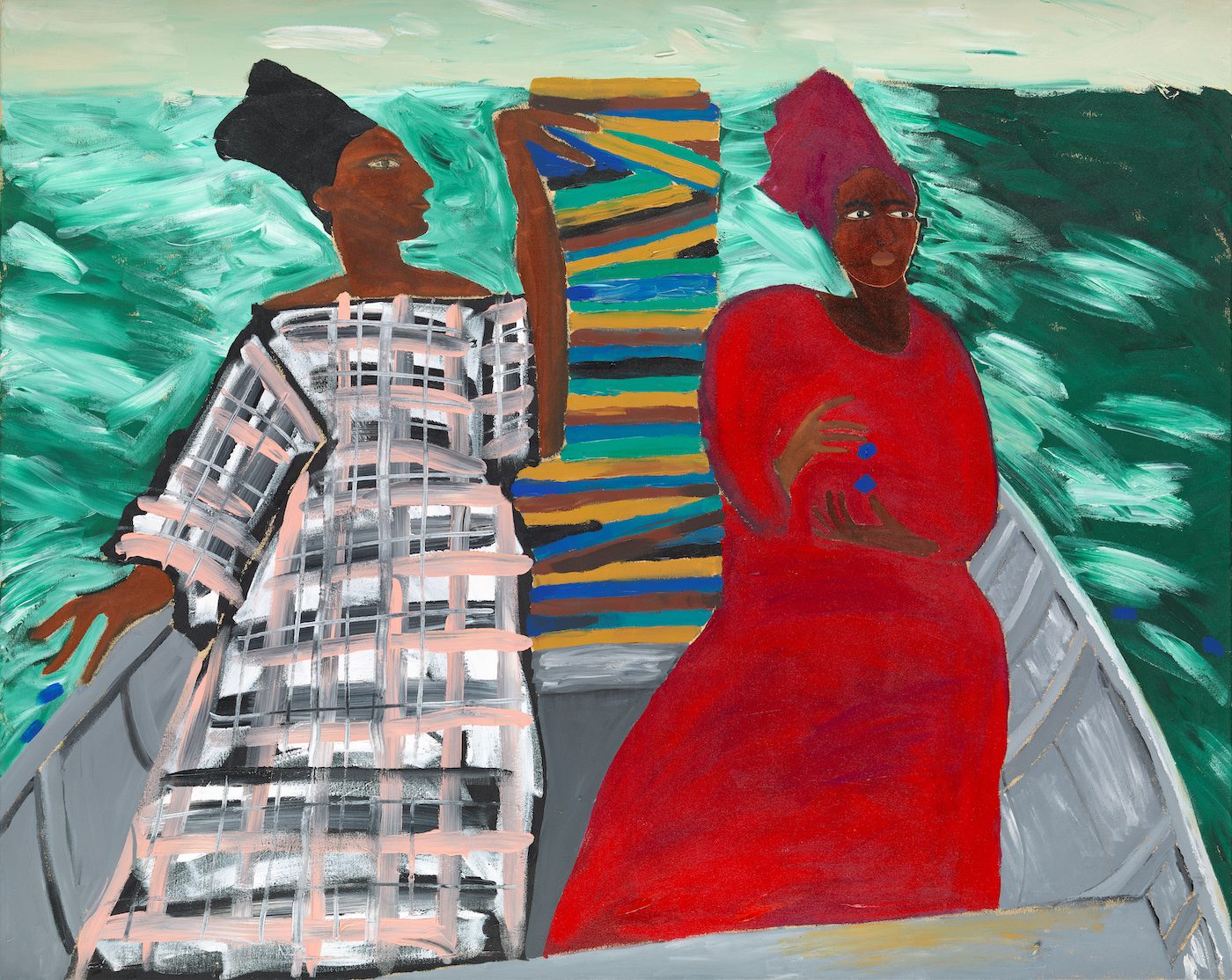The curator of the twelfth Liverpool Biennial links emancipated artistic practices to the city, generating new questions about colonial and enslavement histories.

Lorin Sookool, project on going, 2022. Image by Tanja Hall.
Contemporary And (C&): You have been appointed to curate the twelfth Liverpool Biennial, taking place this year from June 10 to September 17 with the theme « uMoya: The Sacred Return of Lost Things. » Can you tell us about how it connects to the city of Liverpool?
Khanyisile Mbongwa: The title is not something that was determined from the beginning, because my curatorial process is really about listening, forensic listening, ancestral listening. I’m trying to navigate that process by investing my whole body – not as an object, but as a space that has the ability to open itself up and just listen.
When I first visited Liverpool I started thinking a lot about the colonial catastrophe and the enslavement catastrophe. I was really curious about how people who identify as British built this place. I became interested in tracing a line that I call the British colonial cartographic line. And I asked myself: Where did they colonize? Where are the places that encountered their violence?
The other part was being in Liverpool itself and meeting people from different organizations, museums, and spaces and just listening to them. One specific meeting was at the International Slavery Museum where I spoke to Jean-François Manicom, who was one of the curators and a former sailor. He indicated the element of wind because Liverpool is a very windy city – very harsh wind, very brutal wind. I became more curious about its role in the city’s catastrophes and how nature holds and responds to colonial and enslavement violence. It became important to think about the wind in relation to current conversations from the places that were colonized in relation to former colonizers.
The biennial’s title comes from really sitting with and asking the wind questions like: Why? Why did you allow this to happen? Why did you not stop this catastrophe you became part of? It’s really hard to accept how nature concedes to violence, how it is embedded in violence.
It also became important to place the language not as a response or reaction or violation but as a form of world-making: Black-queer-Indigenous-ancient world-making in a context that historically remains white male. uMoya is a word from my mother tongue [isiZulu] and means various things: uMoya means breath, uMoya means air, uMoya means wind, uMoya means soul, uMoya means spirit. It holds a multitude of realities and ways of expression, whereas wind remains wind. The full title became “uMoya: The Sacred Return of Lost Things” because it activates the question of how I use uMoya as navigation, direction, and portal. As something that can direct me somewhere for a possible return, to go into the depth of our woundedness – but it can also remind us that we are going into that woundedness because we believe there is a remedy for the wound.

Lubaina Himid, Between the Two My Heart is Balanced. © Lubaina Himid, Courtesy the artist and Hollybush Gardens
C&: You invited more than thirty international artists and collectives to engage with uMoya and interpret it in the context of Liverpool. How do you hope the selected artists can contribute to unfold other narratives of the city?
KM: I think it’s important to engage yourself with the work of tracing the violence that is inflicted on yourself and your people but also tracing how your people not only survived but made life. I think we should go to the sites of the places that were integral in creating the circumstances and the conditions of violence. It’s interesting that the colonial and enslavement landscape wants us to acknowledge and keep this violence in our bodies – I speak about generational trauma – but no one acknowledges what they have actually done.
So when I was inviting all these artists, I was curious about what they would create through their practices, which I call emancipated practices – practices that go beyond, that have moved further along in the conversation, and are beginning to exit the decolonial context of seeing ourselves. Practices that centralize the artist or narrative rather than the colonizer and the colonial timeline. And for me that is quite important.
I was interested in how these artists would think about Liverpool’s architecture, how it directly relates to their colonial and enslavement history, and to ask: how do we make sure this doesn’t reproduce a somatic response to violence?

Sandra Suubi, The Blues I, 2022. The Blues procession by one of the Banakibuga Street Minds in the Kintintale community. Photograph by Ssemaganda Jay Jeff Kenneth
C&: As a curator and artist you have always been consciously engaged with questions around care and healing. How do you hope to translate this to the context of Liverpool? And more generally: what resources do you need in order to create or maintain spaces for a continuous conversation about care?
KM: When you are an independent curator you have freedom, but you are also limited because you are only temporarily invited into a space. But I’m very big on figuring out what kind of care practice I need to put together. I believe it’s important to circle back to persons you have already worked with, to the same places you’ve already investigated, two or three years later.
I’m also always interested in the institution’s language of governance and the space between the language of governance, the performance of that language, and how the language affects its surroundings. When people invite me, I am very clear that we will not continue the extractive nature of these kinds of relationships. If you are inviting me, know I come to you full as I am: I am a sangoma, mother, full parent, reluctant academic, daughter, sibling, part of the queer community, part of an Indigenous ancestral community, and I am a curator. So I come with all of this. You will not take particular things that interest you about me and leave the rest. I come in my fullness, and for me that’s important as I establish how I need to be cared for. It’s important for people to understand that I’m an ancestral, Indigenous, spiritual healer – and what that means. That I think through my whole body, not just my brain. There’s a spirit working, there are ancestors working. I came into Liverpool with my whole cohort of ancestors.
Being honest and truthful to my pace and how I move has been important to me in creating spaces of sustainability, also for myself. It’s been important how the institution cares for me and gives me indications on how they will care for the artists I invite.
Khanyisile Mbongwa is a Cape Town-based independent curator, award-winning artist and sociologist who engages with her curatorial practice as Curing & Care, using the creative to instigate spaces for emancipatory practices, joy and play.
The 12th Liverpool Biennale entitled « uMoya: The Sacred Return of Lost Things » will take place from 10 June – 17 September 2023.
By Mearg Negusse.
THE NORDICS
More Editorial